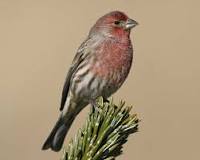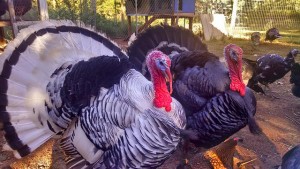Poultry Diseases
Mycoplasmosis
Also known as: Avian Mycoplasmosis, Chronic Respiratory Disease
Mycoplasma are a type of bacteria that do not possess a cell wall around their cell membrane. They can cause severe disease in poultry, mainly affecting the respiratory system. Although there are 22 named mycoplasmas found in various avian species, there are only four which are established pathogens of domestic poultry. Mycoplasma gallisepticum (Mg) and M. synoviae (Ms) affect chickens and turkeys (Jordan and Amin, 1980). M. meleagridis (Mm) and M. iowae (Mi) are pathogenic to turkeys.
Signs and Symptoms
The signs and symptoms of M. gallisepticum infection very much depend on the presence of other poultry pathogens, particularly Newcastle disease, IBD, infectious bronchitis and E. coli. The extent of disease is also dependent on the virulence of the strain of Mycoplasma, the age of the bird and the poultry species. Young birds are more susceptible than older birds and turkeys more susceptible than chickens. If not treated, the disease may persist from a few weeks to more than 18 months in layers. Disease can result in lowered egg production and reduced hatchability and the downgrading of the carcasses of table birds.
Uncomplicated infections frequently produce no clinical signs or mortality in older birds. The disease is often referred to as chronic respiratory disease (CRD). The most common clinical symptoms are associated with the respiratory system: e.g. sneezing, coryza (runny nose) and breathing through a partially open beak. Mild conjunctivitis is sometimes seen, with birds having foamy eyes and/or swollen eyelids and sinuses. When complicated with other respiratory virus infection or more commonly E. coli, serious airsacculitis can result.
Mycoplasma synoviae (Ms) infection produces similar symptoms and has similar characteristics to Mg. It commonly causes mild respiratory problems, although these can be severe under certain conditions. A less common arthritic form can result in joint lesions, lameness and a resulting retardation in the growth of birds, particularly in intensively produced broilers. The foot and hock joints are affected in particular. A fluid may be produced in the tissue spaces of joints, which is initially clear and becomes creamy as disease progresses. In some chickens in an infected flock, the speen, liver and kidney can become enlarged.
How is it Spread?

Outbreaks of Mycoplasma gallisepticum in free-flying birds, such as the house finch, can present risks to free range poultry (image from www.audubon.org)
Disease is often associated with the environmental, nutritional and social stress that sometimes occurs in intensive poultry systems. Large multi-age layer flocks are most at risk, although a high incidence has been recorded in backyard systems in USA (McBride et al., 1991).
The disease is most commonly spread from bird to bird, including nasal discharge, but can also be spread via infected eggs and on clothes and hands of people in contact with infected birds. There is also some evidence that the disease may be spread by wind transmission and other means. The rate of spread of the disease is variable, being rapid in some flocks and slow in others. Barriers, such as pens, can prevent spread of the disease. The adaptation of M. gallisepticum to a free-flying avian species presents potential problems for the control of mycoplasmosis in commercial poultry (Lutrell et al, 2001).
A review covering the history of the discovery and classification, epidemiology, diagnosis, control and pathogenesis of mycoplasmas is given by Jordan (1985).
Control and Prevention
Eradication of infection is the most satisfactory approach to control. Conventional control is normally initiated in breeding flocks by treatment of hatching eggs and monitoring of progeny for infection. Flocks may be considered uninfected when monitored progeny from disease-free parent birds and hatching eggs are shown to be free from infection. Breeding stock are now sold free of infection.
It is advisable that breeding birds are maintained in separate flocks of no more than 200-300 birds as detection of infection will require the whole flock to be discarded.
Mixing multi-age groups can increase the risk of spread of disease, so this should be avoided.
The organism is susceptible to disinfection and under normal conditions does not last for more than a few days outside the bird.
Vaccines are available and may be used if the disease or risk of disease are present on farm.
Methods of Treatment
Mycoplasmosis can be treated using a range of antibiotics, although resistance to some antibiotics has been recorded and treatment normally means reducing the disease to tolerable levels.
Diagnosis of either condition must be based on flock history, symptoms and lesions.
The blood test for mycoplasmosis should be treated with caution as it throws up a lot of false positives. There is also confusion about the relevance of M.synoviae (D.Shingleton, pers.comm).
Good Practice based on Current Knowledge
- Obtain chicks from disease-free parent birds
- Avoid mixing poultry of different age groups
- Keep dust and ammonia levels low
- Monitor weather changes and take steps to minimise any effects
- Check young birds first, to avoid spreading disease from older stock
- Maintain hygiene and biosecurity.
Please note: All the disease management pages on Farm Health Online are reviewed by a sector specialist veterinarian. This page is currently under construction and under review and the contents are therefore subject to change. The advice provided above should therefore be taken with caution, as it has not yet been approved by our panel of experts.


 American English
American English


Comments are closed.